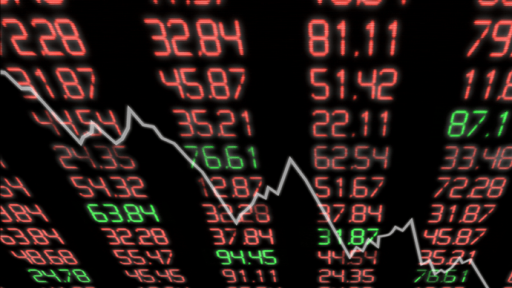- Home
- >
- Trading University
- >
- How to make money in a falling market

How to make money in a falling market

The basis of a good strategy for accumulating great returns from your portfolio is that you keep updating it with top performing stocks. Flexible to manage and diversify. Successfully and effectively applying this approach will save you the unproductive effort of recovering from losses and taking advantage of position upgrades in the short term. It is your ability to not lose money in a bad market that is the key to being able to stay and stay profitable.
Like most things in the markets, of course, this sounds easier than done. The task thus set out seems to defy the maxim directly: the absolute hold of high quality stocks in the long run. But even the most prominent members of this group sometimes make serious adjustments. Apple, for example, has dropped nearly 40% since its last historic high, but the price is recovering and is about to hit new highs.
The dilemma that plagues many market players is how to hold on to their favorite stocks but still prevent their portfolio from collapsing in a weak market. Anyone who has traded during a serious market correction knows the pain and suffering that occurs when trying to hold their key positions in a collapsing market and more than expected.
The best way to maintain exposure to your favorite stocks and at the same time avoid the aforementioned negative effect is to stay around the so-called. core, position, position. This works because it allows you not to lose exposure to your shares in the long run. However, you also reduce the risk when market conditions deteriorate. There are several steps through which you can play the strategy.
Form your initial position without thinking much about the entry levels. Once you have found a stock that you believe is worth holding on to in the long run, the important moment is to actually own it. This way you will get to know the company more closely. Not only that, each stock has its own "behavior pattern" that you will only know if you actually own it and actively follow it. There is no better alternative than actually owning shares. Finding entry and exit is much easier when you are a real owner.
Make sure you have a true trading plan. At what point do you plan to reduce your position? Will you partially close it to increase the cache in your portfolio? Where will you place your next sell stop or buy stop? How big should your core position be against a trading position?
The hard part is actually when you have to implement your trading plan. It is even more difficult when we have to give up one of our favorite stocks when it is performing poorly. There is a known tendency to say that this is a great company and that everything will be fine.
The secret to trading a core position is to always go back to it. If you leave it unsupported, in the end your "most profitable position" will actually be some small trading position. This is also a disappointment for many who try to ignore this approach. They do not have a good trading plan or do not follow it disciplined.
Your positioning at the right moment is not really as important as managing the risk. You can buy a stock at any time as long as you have a sufficiently precise stop and manage the risk properly.
Core position trading is a way that combines the benefits of active trading and the buy and hold method for the long term. The goal is as long as your favorite stocks selected for the long-term horizon suffer, then you accumulate short-term profits. You may need to make more efforts than necessary, but this can produce exceptional results.
 Trader Martin Nikolov
Trader Martin Nikolov Read more:
If you think, we can improve that section,
please comment. Your oppinion is imortant for us.











